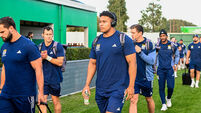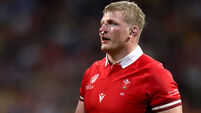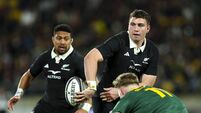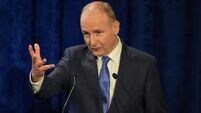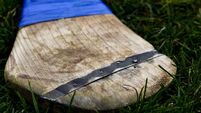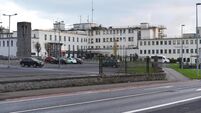How the little town of Hawick remains a vital contributor to Scottish rugby
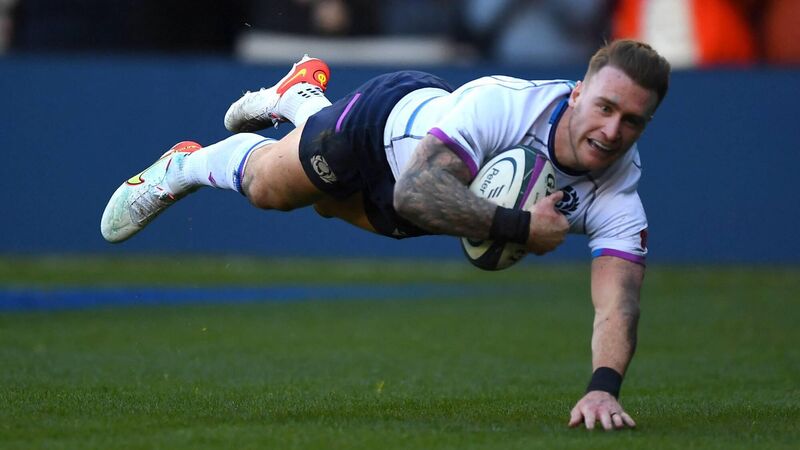
Scotland's full-back Stuart Hogg is one of the Hawick natives who will line up to face Ireland in the Aviva Stadium on Saturday.
When Scotland played Wales at Cardiff Arms Park during the 1978 Five Nations, the starting XV contained six individuals – Jim Renwick, Alastair Cranston, Colin Deans, Norman Pender, Alan Tomes and Brian Hegarty – who all played their club rugby for Hawick.
Then, early in the match, winger David Shedden picked up an injury and had to be replaced by Graham Hogg, who was also from the Borders town but was now attached to Boroughmuir having moved to Edinburgh after leaving school.
Renwick, who was Hogg’s cousin, turned to team-mate Bruce Hay – another Boroughmuir player – and proudly pointed out: “That’s seven Hawick boys on the pitch now”. But a few minutes later, a speculative kick ahead bounced through Hogg’s legs and Wales capitalised with a try.
“Aye, look at the seven bastards frae Hawick,” lamented Hay as the players congregated behind the posts.
“Six frae Hawick and one frae Boroughmuir,” was Renwick’s instant riposte.
These were the glory days of Hawick rugby. The sport was introduced to the town in 1873 as a means of exercise to keep cricketers fit during the winter, but it was during the period between 1945 and the late 1980s that Hawick really established itself as one of the world’s great rugby heartlands, producing a succession of legendary club teams and top international players (60 in total with Derrick Grant, Renwick, Deans and latterly Tony Stanger some of the stand-outs of that era).
Hawick were crowned Scottish champions for the first five years after the introduction of official leagues in 1973-4 and have claimed the title 12 times. They also won the inaugural Scottish Cup in 1996. Not bad for a town where the population peaked in the early 1970s at just over 17,000 people.
However, changes in society and the advent of professional rugby meant that this sort of predominance in the Scottish game was unsustainable. Globalisation has led to increased migration out of the Borders to the big cities by people of rugby playing age [Hawick’s population is now around 13,500], and the creation of Edinburgh, Glasgow Warriors and briefly the Border Reivers ‘district’ sides – owned and operated by the Scottish Rugby Union – means that players on their way to the top now rarely feature for the clubs which created them, with the profile of this essentially amateur tier diminished.
Like almost everywhere else in the world, player numbers in Hawick have plummeted during the last quarter of a century at both age-grade and senior level. In the post-war heydays, four ‘junior’ clubs, each with a 2nd XV, fed into the senior Hawick side, meaning nine adult matches being played on an average Saturday afternoon during the season. Only one of those ‘junior’ clubs – Hawick Linden – remains. The two U18 clubs in the town – Hawick Wanderers and Hawick PSA – amalgamated a couple of seasons back.
Then in 2019, the Scottish Rugby Union launched a new league called Super6, which is supposed to bridge the gap between the traditional domestic game and the professional tier. Clubs were invited to bid for a franchise. Hawick was not selected meaning that it, along with a number of other traditional powerhouses of the Scottish game, were shunted another step further away from the apex, with aspiring players who don’t make it straight into the pro ranks now expected to join nearby Melrose [now known as Southern Knights] in order to keep their dream alive.
Despite all these challenges, Hawick remains a vital contributor to Scottish rugby.
When the national men’s team kicked off this Six Nations campaign with an excellent home win over England, the starting XV contained 10 homegrown players, and three of them were from Hawick. Rory Sutherland (who has now succumbed to injury) and captain Stuart Hogg were British and Irish Lions last summer, while winger Darcy Graham has been the team’s form player in this championship.
Scotland U20s might be struggling this year, winless going into Sunday’s match against Grand Slam chasing Ireland at Musgrave Park, but their captain Rhys Tait – who is also from Hawick – has been a totem of defiance for the youngsters.
Meanwhile, two members of the Scotland women’s team which defeated Colombia in Dubai last month to qualify for October’s World Cup in New Zealand are also from the town, with hooker Lana Skeldon and centre Lisa Thomson both named this week in the team’s Six Nations training squad ahead of next weekend’s campaign opener against England.
Hawick has been forced to adapt and according to Graham Hogg – rugby development officer in the town as well as older brother to the current national team captain – it needs to continue evolving to stay relevant.
“We have a massive history, but I think we were relying too much on that, and we weren’t being too proactive on what to do next,” he said. “We’re proud of what Hawick has achieved, and we take inspiration from that, so we need to get the good news stories out there about these Hawick folk who are playing for Scotland now. We’re getting there, but it is going to be a constant battle, and we can’t afford to stand still because if you do that in the modern game then you’re dead.”




